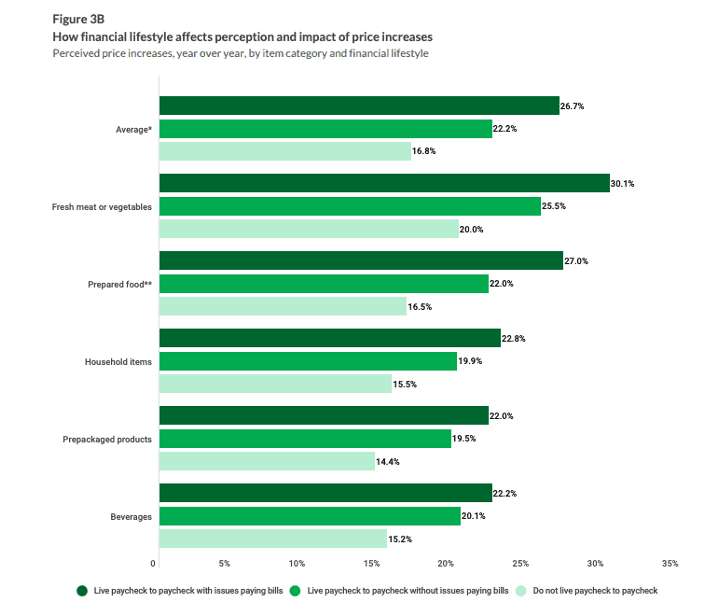
When it comes to inflation, consumers may be a more accurate barometer than government statistics.
In a series of studies, PYMNTS has consistently found disagreement between consumers’ perceptions of price increases and those reported by the Bureau of Labor Statistics (BLS).
Our latest sounding, “Consumer Inflation Sentiment: Perception Is Reality,” based on a survey of 2,140 U.S. consumers, shows this disconnect, saying, “In conflict with the BLS data, consumers — especially those with less financial security — perceive prices have increased significantly and are modifying their behavior accordingly. Additionally, consumers anticipate that inflation will continue above normal levels through July 2024.”

Focusing on consumers’ paycheck-to-paycheck lifestyles, the study finds that 69% of consumers have had to re-engineer shopping lists to make ends meet. Of grocery shoppers surveyed who observed rising prices, almost 6 in 10 (59%) reduced nonessential grocery purchases, and 35% traded down. “Only 11% of consumers simply switched to lower-quality items; over three times that share (34%) purchased fewer items but kept quality unchanged,” per the study.
While the BLS has said costs of food at home and away from home rose by 11% and 8.5%, respectively, in the last 12 months, consumers surveyed by PYMNTS feel it’s not an accurate reflection of their experiences at the checkout or the gas pump.
“Many consumers disagree with the BLS’ numbers, reporting increases up to two times higher across multiple grocery categories,” the study states. “On average, consumers report that grocery prices have increased 22% in the last year. The biggest gap can be seen in fresh meat and vegetables, with the BLS reporting a 4.5% increase versus consumers’ perceived 25% increase.”
For example, consumers living paycheck to paycheck and struggling to pay bills “reported a perceived 27% increase in grocery prices, as opposed to the 17% increase reported by consumers who do not live paycheck to paycheck. The BLS, however, reports an 11% increase.”
Get the report: Consumer Inflation Sentiment: Perception Is Reality